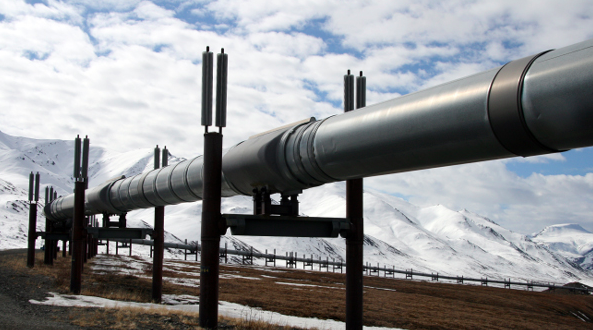Last Wednesday, the Anchorage Economic Development Corporation hosted its annual economic summit. Downtown denizens of Los Anchorage watched more than a thousand attendees navigate convention center chicken as number-crunchers told the tale of Alaska’s largest city and its economic fortunes.
And right on cue, the city’s newspaper of record was there — not to capture the real story, but to run its usual filtered version, where every chart and forecast is bent just enough to fit the preferred “Trump bad, tariffs worse” storyline.
This gathering is the closest most residents will get to a Federal Reserve meeting on interest rates, complete with politicians of every stripe in the audience, eager to divine their next-year talking points from whatever wisdom is dispensed in that hour and a half.
Amid the packed agenda, economists from McKinley Research walked through the key elements of the local economy and offered a two-year outlook. The local daily newspaper’s coverage was predictable: a headline focus on the impact of tariffs (bad!), framed as an impending cascade of doom because … Trump bad.
That narrative had two problems. First, the economists didn’t say that. They acknowledged that an America-first trade policy could ripple through various sectors, but they weren’t wringing their hands. Second, and far more important, the newspaper entirely missed the economists’ loudest point: oil remains a pillar of Anchorage’s economy.
Payrolls tied to large-scale projects like Santos’ Pikka development and ConocoPhillips’ Willow project are delivering meaningful, positive impacts in Southcentral Alaska. And that’s just the visible part. McKinley’s economists admitted there are data gaps—the spending power of slope workers, including the many Alaska-based Hilcorp employees at Prudhoe Bay, doesn’t even show up in Anchorage job counts.
Omitting that story is unsurprising, but still disappointing. These projects, and the thousands of Anchorage jobs they support, wouldn’t exist without a pivotal choice made more than a decade ago. Then-Gov. Sean Parnell and a Republican majority — back when they acted like a team — overhauled Alaska’s Soviet-style oil tax system, paving the way for new investment. The goal was simple but strategic: Don’t punish producers when prices are high; instead, incentivize more production.
To their credit, McKinley’s economists brought the data showing the results: Production increases over the past decade, achieved despite oil price collapses, hostile federal administrations on both sides of Trump’s tenure, and endless environmental lawsuits designed to stall development. Against those headwinds, Alaska’s private sector has delivered engineering marvels on the Arctic coast.
Every new American barrel of oil forces Russia, Iran, and other adversaries to compete harder. This kind of economic competition, which makes critical supplies available to the free world, is a direct result of the pro-growth vision embraced by Republicans when they still believed in markets, business, and workers.
As our president prepares to meet his Russian counterpart in Alaska this week, it’s worth remembering that much of our state’s viability flows through a 48-inch steel pipeline, built and maintained by people scorned by the very groups who never hesitate to cash the checks its revenues fund.
Suzanne Downing is the founder of Must Read Alaska and serves as editor.

My flying saucer runs on psychic energy and my home is powered by cosmic rays.
Y’all earthlings need to catch up with the times.
Just look at the bond market…Trump does not have foreign investment coming in.
Until he stops sending weapons to Ukraine and Israel, our economy is in decline.
And water remains wet.
I occasionally buy a copy of the Anchorage Daily News but only for the bird cage.
With EIA predicting $50 oil in 4th quarter maybe it’s time to hand President Trump a thank you on his promise of cheap gasoline. I’m sure that will translate into more hiring in the oil sect in AK. Hey, but at least our southern border in shut, I know my life has changed since that. Eggs and fruit seem like a bargain again!
The bond market has not been healthy since the 2008 crash. My S&P 500 holdings have done rather well. Bonds are for suckers.